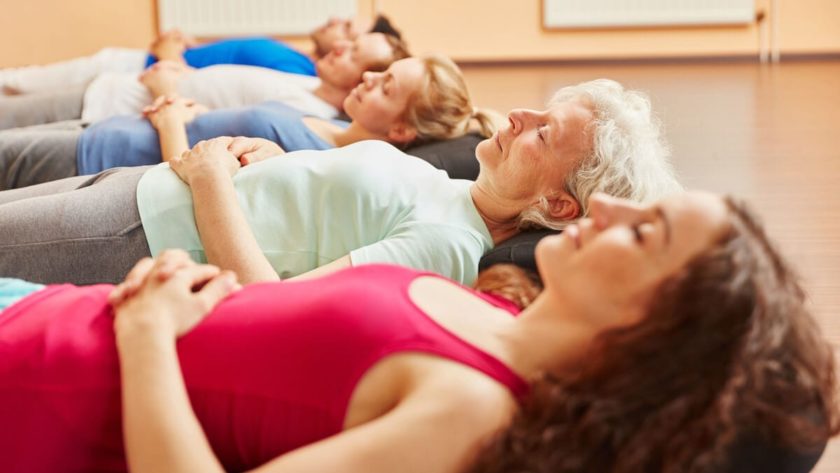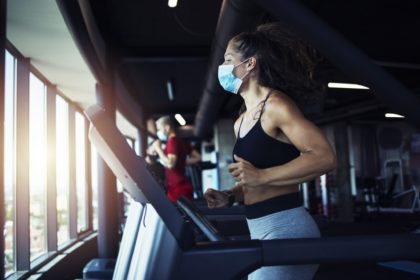Practicing proper breathing techniques are fundamental to athletes, singers, and avid exercisers. These practices not only help you reach peak performance, but are also helpful in increasing longevity and reducing stress, anxiety and shortness of breath.
Breathing for Your Health
For patients with pulmonary problems, good breathing techniques can have a phenomenal effect. To “just breathe” sounds easy, but when you can’t breathe, nothing could be more frightening.
When to Use Breathing Exercises
Best used by persons:
- Under stress
- To control anxiety
- During exertion in persons with lung cancer or pulmonary/heart disease (such as bending, lifting, stair climbing)
I. Pursed Lip Breathing
One of the best remedies for shortness of breath as it quickly slows your breathing pace. Each breath is more effective at taking in oxygen.
Why Use Pursed Lip Breathing
Pursed lip breathing:
- Improves ventilation
- Releases trapped air in the lungs
- Keeps the airways open longer and decreases the work of breathing
- Prolongs exhalation to slow the breathing rate
- Improves breathing patterns by moving old air out of the lungs and allowing for new air to enter the lungs
- Relieves shortness of breath
- Causes general relaxation
The Pursed Lip Breathing Technique
Practice 4-5 times a day to perfect the breathing pattern to where it feels natural.
- Relax your neck and shoulder muscles.
- Inhale for two counts (mouth closed). Do NOT take a deep breath. Just take a normal breath.
- Pucker or “purse” your lips — as if you’re going to whistle, gently flicker the flame of a candle, or drink through a straw.
- Exhale slowly and gently through pursed lips for 4 counts.
II. Belly Breathing (a.k.a. Diaphragmatic, Abdominal or Deep Breathing)
Good breathing starts with a strong diaphragm (the dome-shaped muscle below your lungs and control breathing). Strong abdominal muscles help move the diaphragm which makes for a more powerful exhalation.
Basically, diaphragmatic breathing involves inhaling through the nose and exhaling through the mouth. (NO MOUTH BREATHING.)
NOTE: This exercise is especially helpful for people with COPD or asthma as air can get trapped in the lungs because the lungs lose their elasticity. The trapped air pushes down on the diaphragm whereby the neck and chest muscles need to assist with respiration. By working less, the diaphragm becomes weak and unable to work efficiently.
Why Use Diaphragmatic Breathing
Belly breathing is the basis for almost all meditation or relaxation techniques:
- Strengthens the diaphragm (the key to powerful expiration)
- Improves core muscle stability (weak postural muscles increase fall risk and decrease functional fitness)
- Slows breathing rate which decreases the work of breathing (increases efficient flow of oxygen)
- Decreases oxygen demand (more oxygen for the brain, muscles, and organs)
- Uses less effort and energy to breathe (lessens pressure on the lungs)
- Helps you relax (reduces the release of stress hormones, e.g., cortisol, which increase systemic inflammation and chronic inflammatory diseases and damage to the inner lining of the arteries)
- Lowers heart rate (reduces strain on the heart)
- Lowers blood pressure (reduces pressure against arterial walls)
The Diaphragmatic Breathing Technique
Practice 3-4 times per day for 5-10 minutes (gradually increasing the time).
Lying Down:
- Lie on the floor* with knees bent. Place one hand on your upper chest and the other on your abdomen (just below your rib cage).
- Relax your shoulders.
- Tighten your abdominal muscles. The hand on your upper chest must remain as still as possible.
- Inhale (mouth closed) for 2 counts and exhale through pursed lips for 4 counts very slowly while watching your belly move up as it fills with air and moves down as it expels air.
*Can be done sitting or standing (after gaining more practice).
III. 4-7-8 Breathing Exercise (The Relaxing Breath)
The 4-7-8 Breathing Exercise stimulates the vagus nerve which triggers the release of acetylcholine (a neurotransmitter), also known as the body’s ‘natural tranquilizer’. Stimulating the vagus nerve helps to lower blood pressure and reduce chronic systemic inflammation. Chronic inflammation is linked to inflammatory diseases, such as Alzheimer’s, heart disease, arthritis, and much more.
![]() Karen’s Fit Tip: 1) Don’t force the air out. 2) Always take longer to exhale — twice the time you spend breathing in. 3) Breathe slowly, gently, and stay relaxed. Breathe in and out until you are completely in control.
Karen’s Fit Tip: 1) Don’t force the air out. 2) Always take longer to exhale — twice the time you spend breathing in. 3) Breathe slowly, gently, and stay relaxed. Breathe in and out until you are completely in control.




